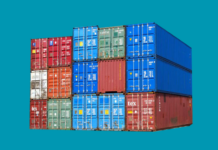Normally, you expect news out of San Francisco would have to do with the city’s gigantic tech scene and the many major companies like Google and Meta that call Silicon Valley their home. But at the end of last month, the Tech Capital of the world was uncharacteristically at the centre of a tense moment in the international trade of agricultural commodities.
In the third week of August, soybean farmers from all over the United States and potential buyers from all over the world descended on The City by the Bay to engage in negotiations to buy and sell soybeans.
The occasion was an annual conference on the topic of Soy, and the pulse of the event was easy to gauge. The United States is seeing perhaps one of the best soybean crops in its history this year, and farmers there are looking left, right and centre for buyers. The United States Department of Agriculture (USDA) has estimated US soybean production will reach a record 124.9 million tonnes in 2024-25. This has pushed prices 18% below the average estimated cost of production in that country, making it a nervous time for farmers looking to push their product and a lucrative chance for buyers.
Why is this relevant to us? Because among the more than 700 people attending the conference at a downtown hotel, there was a small delegation of Pakistanis as well. Soybeans are not grown in the country, but they are an important caloric component in the average Pakistani diet. Not only are they used as a component in cooking oil, often mixed with other oilseeds such as canola and sunflower, they are a big part of poultry feed.
But unlike their colleagues from Sri Lanka, Bangladesh, and other regional neighbours, the Pakistani buyers present at the event were saddled with baggage. You see the majority of the soybeans grown in the United States are Genetically Modified Organisms (GMOs). Even though the law allows the import of GMOs oilseeds into Pakistan, which are for crushing not planting, since last year the government has effectively barred the import of these GM beans by not issuing permits and delaying applications. Which is why while other countries were trying to get the best deal, Pakistani buyers were desperately looking for farmers willing to sell them non-GMO soybeans which cost significantly more. This increased cost ends up having an inflationary effect on the prices of cooking oil and chicken, making two staple basket goods costlier and contributing to rising food inflation.
For all intents and purposes, you have a situation where the United States has cheap soybean to offer, Pakistani buyers want to buy them, but the Pakistani government is intervening because it does not understand its own laws and the international protocols it is party to.
But why does the government of Pakistan not allow the import of genetically modified soybeans from the United States? What exactly makes them so much cheaper, and the entire matter really as simple as it seems? To answer these questions, we must go through the dramatic highs and lows of the past few years. The content in this publication is expensive to produce. But unlike other journalistic outfits, business publications have to cover the very organizations that directly give them advertisements. Hence, this large source of revenue, which is the lifeblood of other media houses, is severely compromised on account of Profit’s no-compromise policy when it comes to our reporting. No wonder, Profit has lost multiple ad deals, worth tens of millions of rupees, due to stories that held big businesses to account. Hence, for our work to continue unfettered, it must be supported by discerning readers who know the value of quality business journalism, not just for the economy but for the society as a whole.To read the full article, subscribe and support independent business journalism in Pakistan

























R u even aware what GMO products are? Surely u look ignorant by supporting the purchase of GMO. its not always the price to look for. Look what will u get it so cheap. can u think on it, y is it cheap. the answer lies in its outcome n u have no idea what ur talking about. GMO is not recommended at all. Don’t market them here, thank u. We are good without it.
u seem to be so over innocent by writing, ‘usa wants to sell us so cheap’. aww really!!